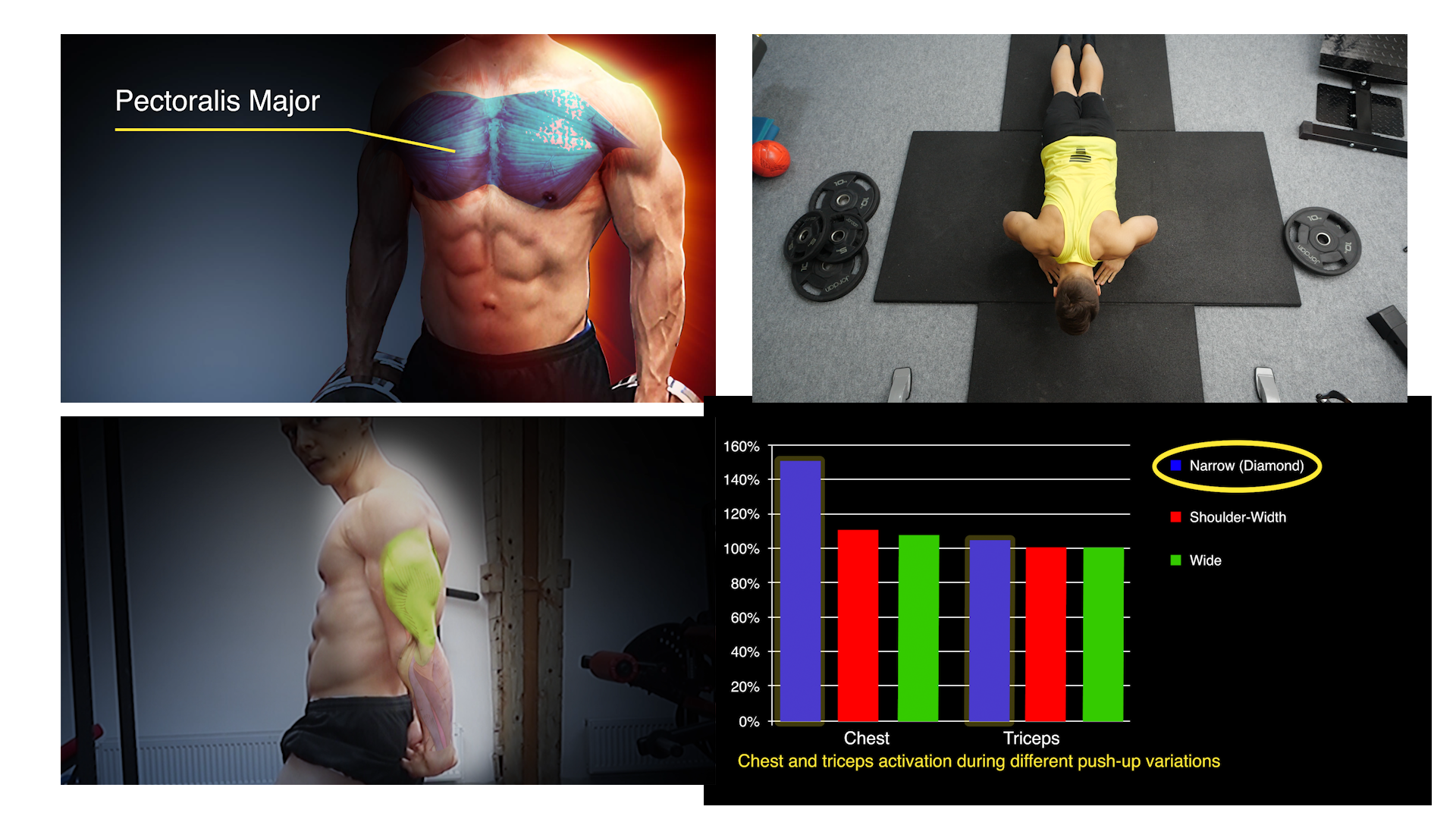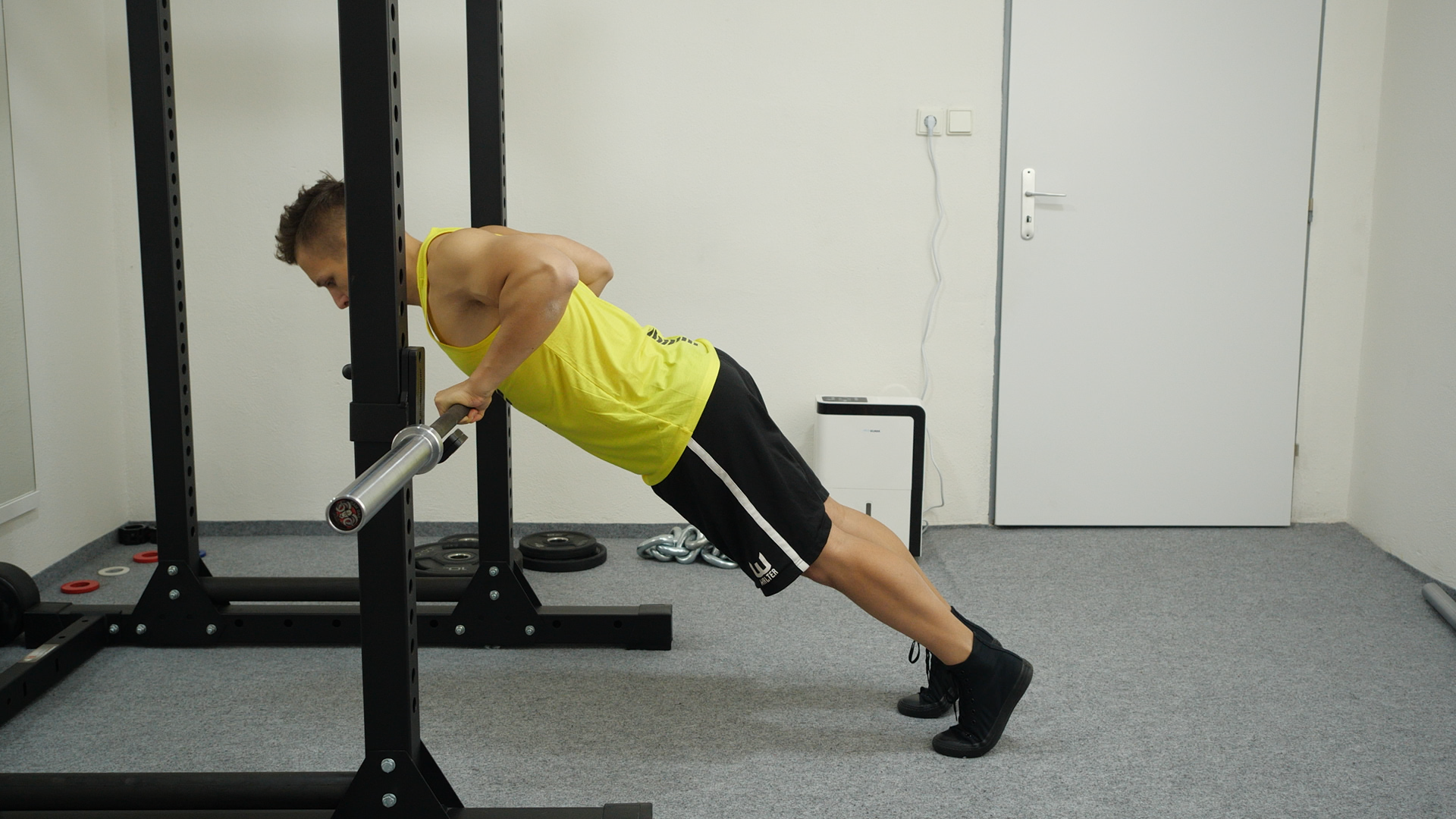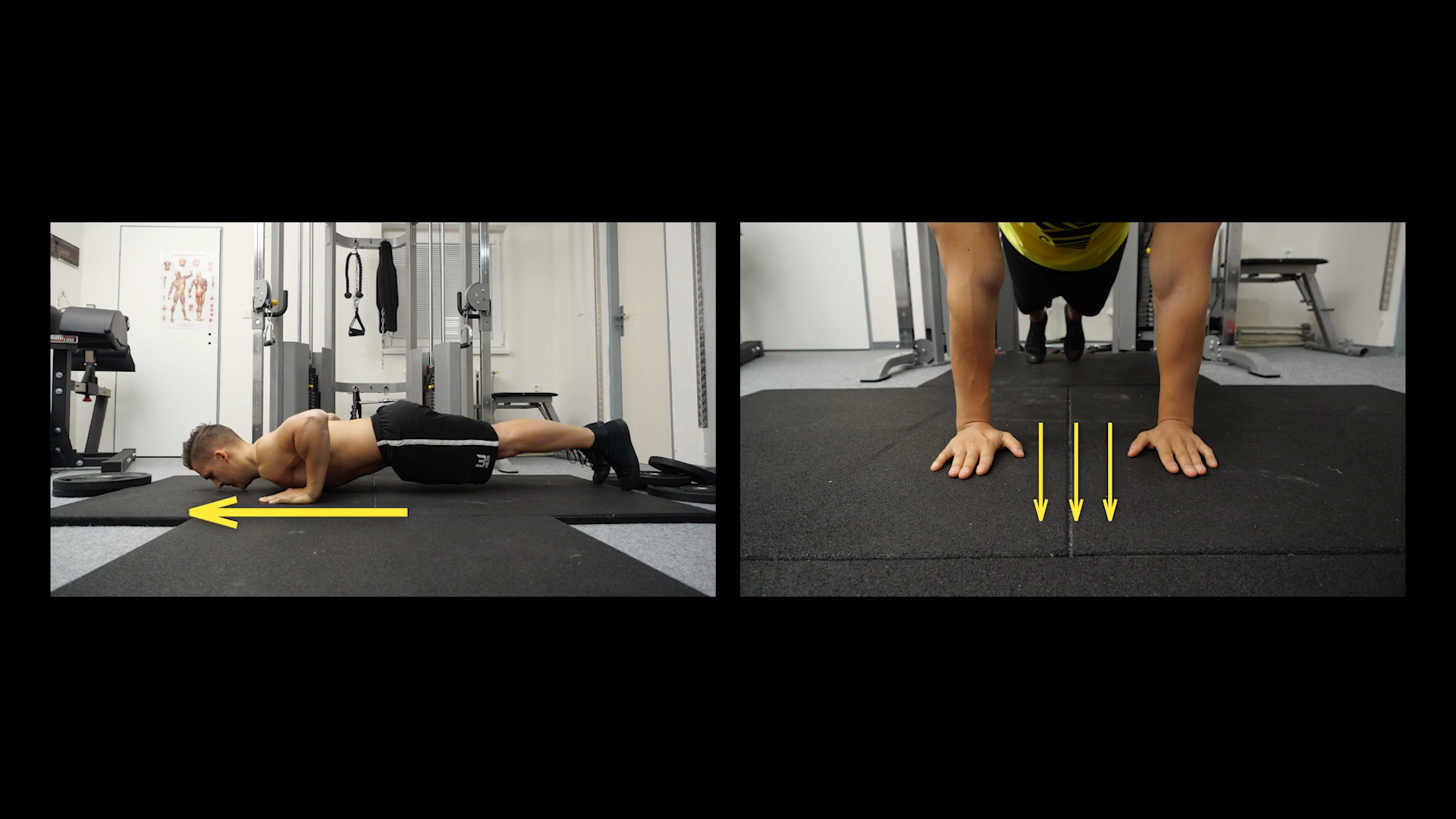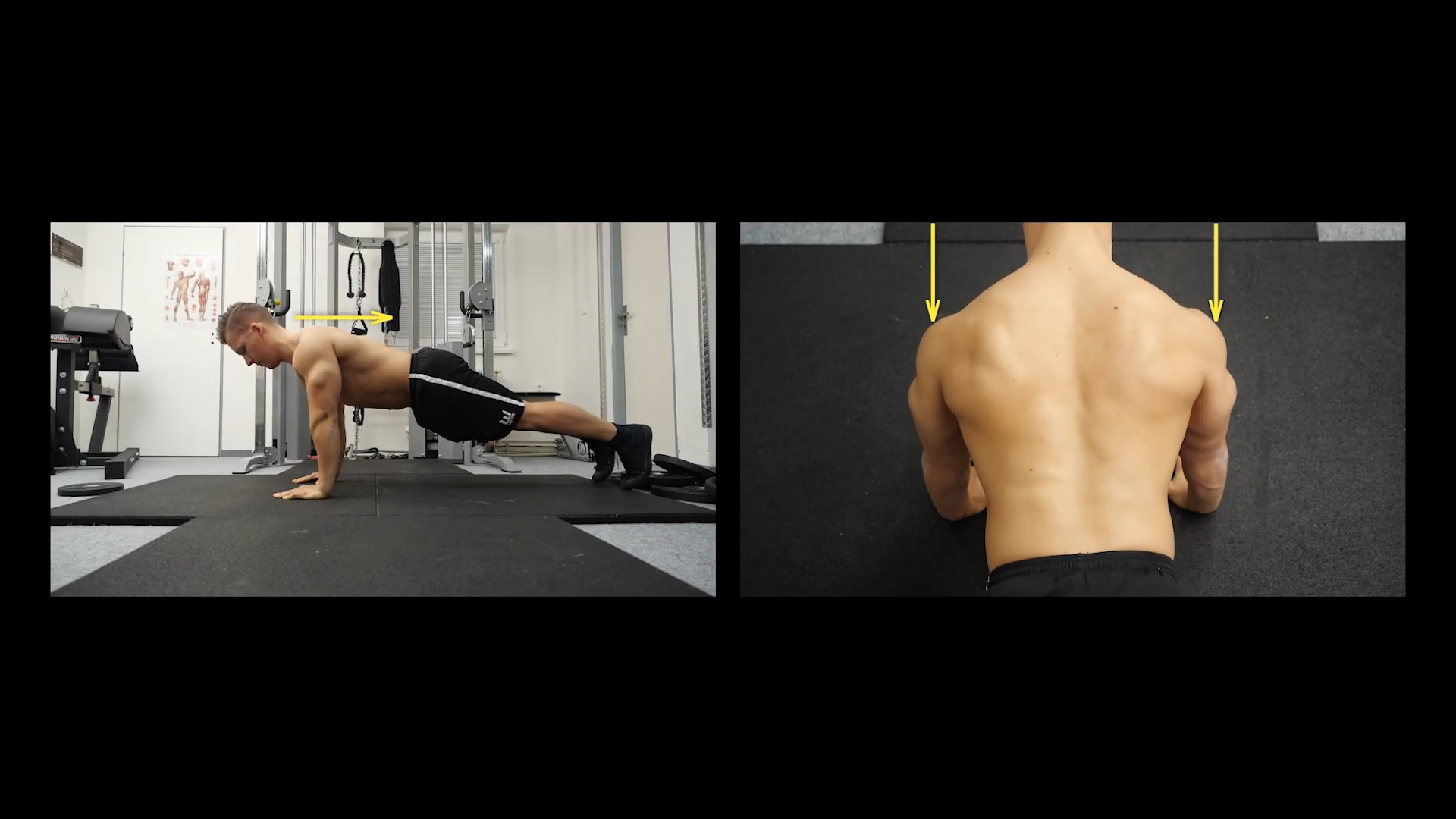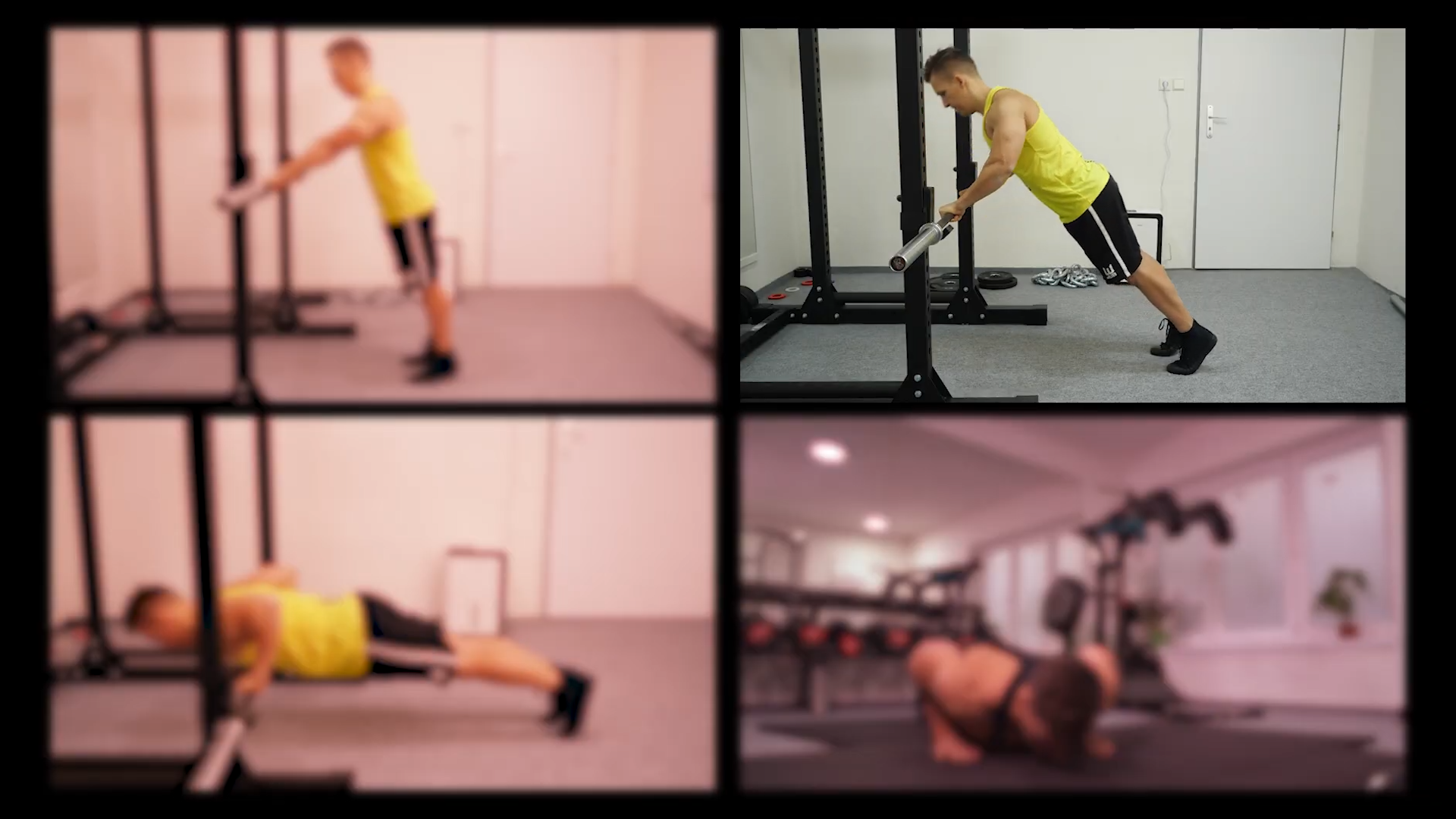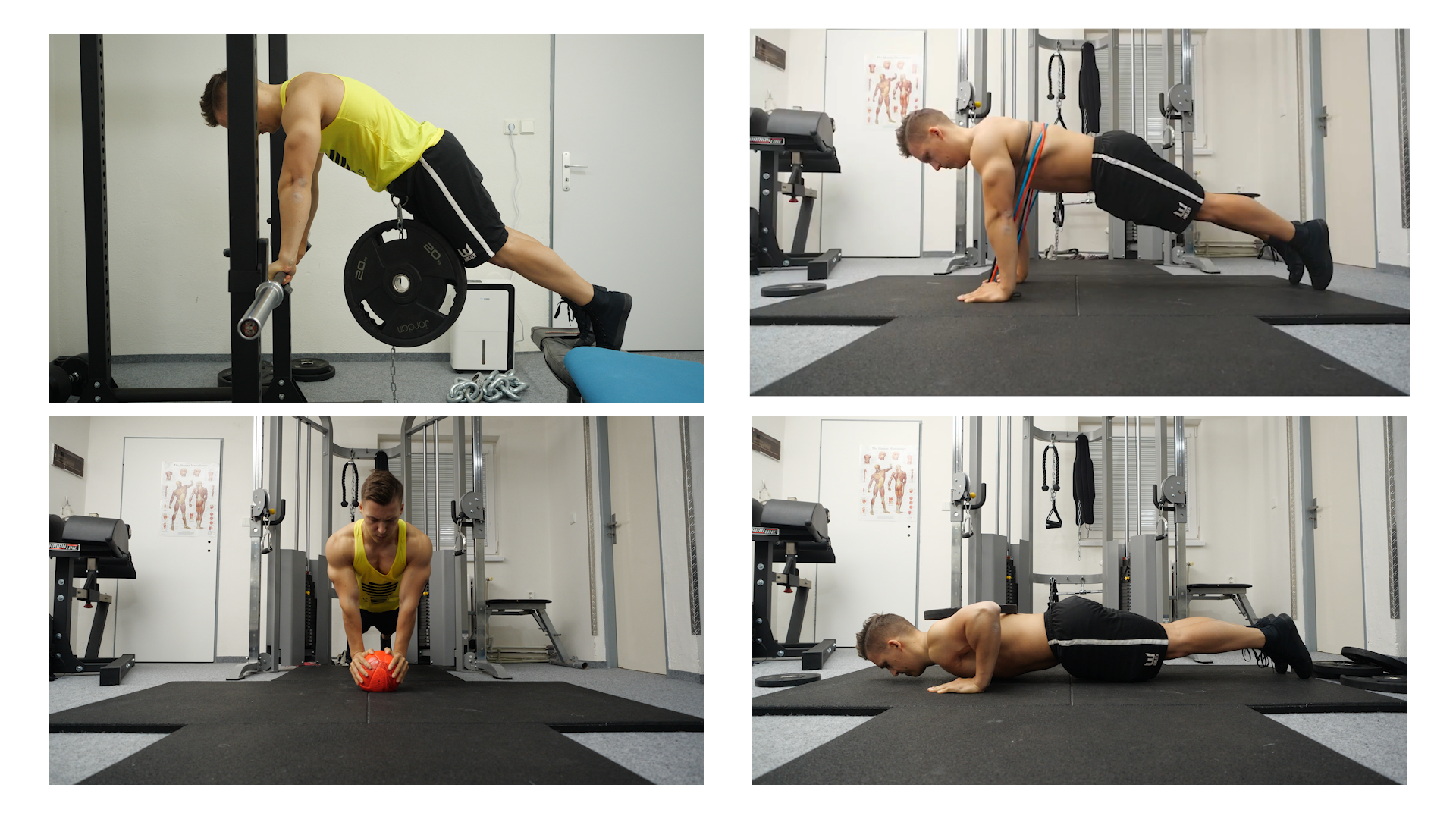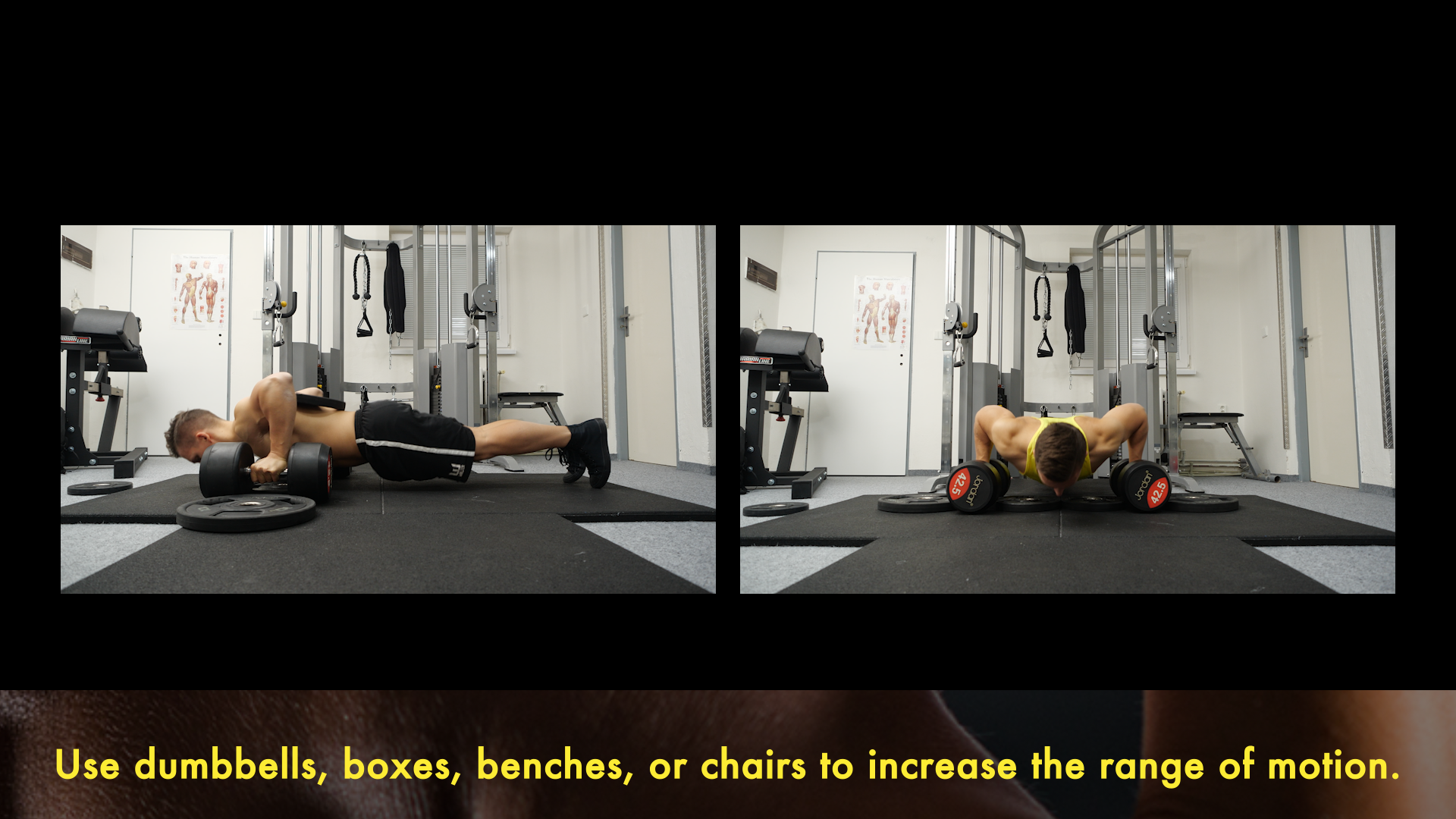- How to STOP Struggling With Push-ups,
- Push-up MISTAKES to AVOID,
- The Perfect Pushup To Build Muscle
Hi,
After reading this article, you’ll know the following:
Click on the timestamps to watch particular chapter of the push-up video.
0:26 Why are push-ups one of the best exercises to build muscle
1:26 The most effective push-up variant
1:56 How to do the perfect pushup to build muscle
3:12 Push-up mistakes to avoid and how to avoid them
5:33 How to stop struggling with push-ups
6:16 How to use special equipment for the perfect pushup to build muscle
6:43 How to build muscle with push-ups with no equipment
6:58 Bonus PDF and Exclusive content
Push-ups primarily activate the pectoralis major, front of the shoulders, triceps, and to some extent, many other muscles.
Some say, “Push-ups? They’re for beginners,” because they don’t know how to make them challenging enough in the long term. So they could use progressive overload and benefit from them as much as possible.
It’s an exercise that may be as effective as a bench press to make you bigger and stronger if you know how to make it challenging enough, confirmed by two 5 and 8-week studies. (1, 2)
Unlike the bench press, which is an open-chain exercise, push-ups are a closed-chain exercise during which you lift your body weight.
Closed-chain exercises allow your body to determine which joints to move and how much.
They allow you to spread the lifted load freely across individual muscles, thus putting less strain on your joints and connective tissues.
On this scale, closed-chain exercises are preferable to open-chain. Such as one-arm exercises are preferable to two-arm exercises from this point of view.
The Perfect Push-Up, Grip width, and Elbow position
To improve long-term, choose a variant that doesn’t cause you health problems and, at the same time, enables you to apply almost limitless progressive overload.
Although some say that for maximum engagement of the pectoral muscles, you should keep your elbows as far away as possible from the body. And at the same time, have a wider hand spacing, and for greater activation of the triceps, you should perform narrow push-ups with the elbows closer to the body.
Some studies show that in terms of pec and triceps activation, the most effective are diamond push-ups, performed narrowly.
You should know, however, that such variation creates a higher pressure on the wrist, which may be okay after one training session.
Still, in the long run, when you load it correctly, it can cause you wrist pain.
In addition, narrow push-ups put more pressure on the elbows. (3)
In the long run, there are better options.
If you train recreationally or do everything you can to maximize your results, there is a big difference.
The training stimulus and overall load are much more significant.
Therefore even the slightest mistake can result in an unpleasant injury in the long run.
Perform push-ups at approximately shoulder width to spread the load as evenly as possible.
Moreover, in the lowest position of the exercise, your forearms should be perpendicular to the floor or a support point.
The exercise variant should always fit your individual needs, limitations, goals, and preferences.
The Most Common Push-Up Mistakes and How To Fix Them
Make sure you set clear technical standards to activate the desired muscles as much as possible while avoiding injuries, no matter what exercise you do.
The video (link) about bench press mistakes shows why the correct technique is essential and how to evaluate technical quality.
Basic body settings
The support points are the palms and the tips of the feet.
Keep your body relatively straight throughout the movement.
Sagging legs and buttocks
A common mistake is sunken legs and butt, or, on the contrary, a protruding butt.
As with other compound exercises, keep the whole body tight. So that there’s no energy loss, and thus you increase the possible performance and stability.
For this reason, keep the quads and glutes tight throughout the movement to maintain maximum stability in the entire body.
This is a similar principle to the bench press.
The head posture, range of motion, and the movement pattern
In most cases, a full range of motion leads to faster muscle gains, better mobility, and a different type of muscle growth than a reduced range of motion. So be careful of forwarding the head, which reduces the range of motion and can lead to neck overload.
It can help you if you imagine that someone is pulling you by the top of your head.
Try less challenging variations if you have health limitations that prevent you from the full range of motion. Or use different exercises, or use a shorter range of motion with a lower weight.
Start the movement from fully extended arms with shoulders above the level of the palms.
In each repetition, you should touch the floor with your chest in the lower position, from which you shouldn’t bounce.
Use a bar or box and put your feet on the bench if you are strong and fat.
The path of movement is similar to the bench press.
Start the movement with your hands below your shoulders.
Your hands should be in the lower chest area in the lowest position.
Wrist and grip
Your palms should point in the same direction as your body.
The most weight should rest on the lower parts of your palms while being evenly distributed between the thumb and little finger edges.
Your palms shouldn’t point directly inwards or outwards to prevent injury or pain.
Use firmly secured dumbbells if the standard grip does not suit you.
You can increase the range of motion a little more, thus making the exercise more challenging.
The movement of the shoulder blades
Before you begin, press the shoulder blades down from the head.
Push the shoulder blades together as you descend.
Move them away from each other as you move up.
Breathing
Before lowering your body, take a deep breath into your belly and exhale before extending your arms.
How to start with push-ups
If you can’t perform push-ups on the floor with your own weight, put your hands on a bar or bench.
Gradually lower the height of the support point up to push-ups on the floor.
Increasing weight
If you wanna make maximal progress, make sure that push-ups are challenging enough and that you apply progressive overload over time.
The push-up is a compound exercise in which there is a different degree of muscle activation depending on the intensity.
*Note – Intensity – The percentage of the weight lifted from the maximum weight for one repetition 1RM – 80% intensity from 100kg(lbs) is 80kg(lbs)
Moreover, alternate intensity periodically to avoid boredom and physiological overuse in response to the same training stress.
If you have a minor injury or pain, I recommend temporarily reducing the intensity (not effort) or using other options.
Special equipment
If you use special equipment to increase the difficulty of the exercise, you can add resistance bands or plates that you can place on the back of your body.
You can also add plates on your belt that enables you to use almost limitless weight and increase your core’s activation.
Use stable surfaces to maximize the activation of targeted muscles safely.
On the other hand, unstable surfaces can significantly increase the activation of the triceps. (4) So it can be viable if your equipment is limited.
Push-ups with no equipment
If you don’t have any of the mentioned equipment, use deficit, which increases your range of motion and the difficulty of the exercise.
In the short term, you can add a working set, number of repetitions in one set, or lengthen time under tension.
The Bonus PDF + Exclusive content
If you master the technique of push-ups and at the same time apply progressive overload, you can benefit from it in the long term, as many of my clients and I do.
On the other hand, remember that this is only one of many effective exercises for the pectoral muscles and triceps.
The long head of the triceps doesn’t engage maximally during push-ups.
Moreover, more variety, to some extent, builds more muscles over time.
So add more exercises if you wanna get maximum results.
For that reason, I prepared a bonus PDF you can download in the comment section.
Do you wanna take your physique to the next level, as many of our members and I did?
Click here and get more information.
Summary:
- Push-ups are effective and may be beneficial even for elite lifters.
- At least in the short term, push-ups can be as effective in increasing muscle mass as the barbell bench press.
- Not all variations of push-ups are suitable for everyone, and not all variations load individual joints and muscles equally.
- You develop mainly the upper body with push-ups but engage the entire body.
- Do push-ups with your hands on a bar or box if you can’t perform a single push-up on the ground with the proper technique.
- When you lower the body, the shoulder blades move together.
- When you lift the body, the shoulder blades move apart.
- The shoulders should remain down from the head throughout the entire range of motion.
- The movement starts with the palms above the shoulders. And it ends with the palms in the lower chest area, similar to the bench press.
- The body is in a neutral position, and the head looks like an extension of the spine.
- The tempo is under your control (9:11), and the breath is regular.
- The hands, the between-the-palms space, and the angle between the elbows and the body should fit your goal and individual needs.
- Your forearms should be directed perpendicular to the support point from the front and the side view in the lowest part of the movement.
Question of the day: What can I do to make the following video even better?
Answer in the comment section.
Wanna see more of the most effective evidence-based methods?
Subscribe and share the video with your friends to help them as well!
See you next week!




